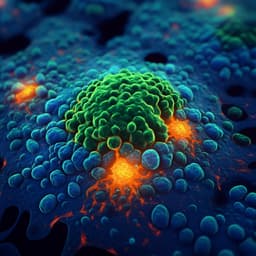
Space Sciences
Challenges of Deflecting an Asteroid or Comet Nucleus with a Nuclear Burst
P. Bradley, C. Plesko, et al.
Discover cutting-edge research on asteroid deflection methods, focusing on the innovative use of nuclear bursts. This study by a team of experts from Los Alamos National Laboratory and Southwest Research Institute dives deep into the challenges and numerical simulations essential for protecting our planet.
Playback language: English
Related Publications
Explore these studies to deepen your understanding of the subject.







